By Sam Glaser
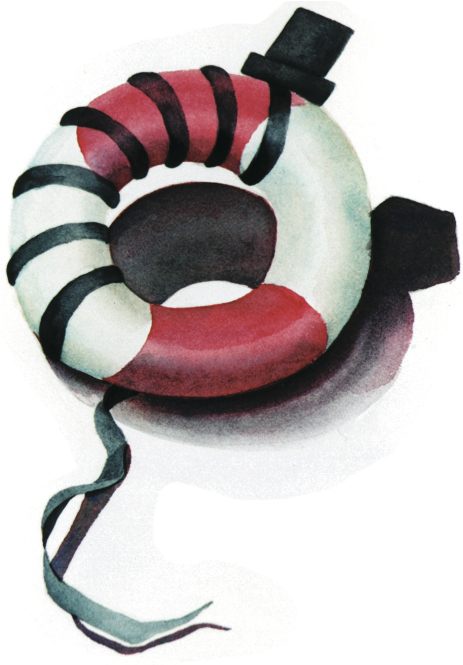 My first exposure to tefillin was in a basement workshop of a holy sofer (scribe) in Jerusalem. I was in Israel for my Bar Mitzvah; a lucky Brentwood, CA boy whose parents opted not only for an LA celebration but also for a meaningful few weeks touring the Promised Land. The culmination of the experience was a second Bar Mitzvah service at the Western Wall where I read Torah at the spiritual “ground zero” of our planet and forged an unbreakable bond with Israel and my people. I remember my new tefillin straps feeling sharp and rough; it would be months before the leather would soften and feel comfortable on my skin. After this trip my father made a point of praying with me in his rich, walnut-lined study in the mornings before school, allowing for quality father-son time and ensuring that my tefillin would actually get some use.
My first exposure to tefillin was in a basement workshop of a holy sofer (scribe) in Jerusalem. I was in Israel for my Bar Mitzvah; a lucky Brentwood, CA boy whose parents opted not only for an LA celebration but also for a meaningful few weeks touring the Promised Land. The culmination of the experience was a second Bar Mitzvah service at the Western Wall where I read Torah at the spiritual “ground zero” of our planet and forged an unbreakable bond with Israel and my people. I remember my new tefillin straps feeling sharp and rough; it would be months before the leather would soften and feel comfortable on my skin. After this trip my father made a point of praying with me in his rich, walnut-lined study in the mornings before school, allowing for quality father-son time and ensuring that my tefillin would actually get some use.
Unfortunately I fell into the pattern of most of my Conservative peers and my Bar Mitzvah year would be the last time I’d have any shred of active Jewish life. Yes, I attended confirmation and a few youth group activities but Judaism as I saw it was for nerds and those without a social life. My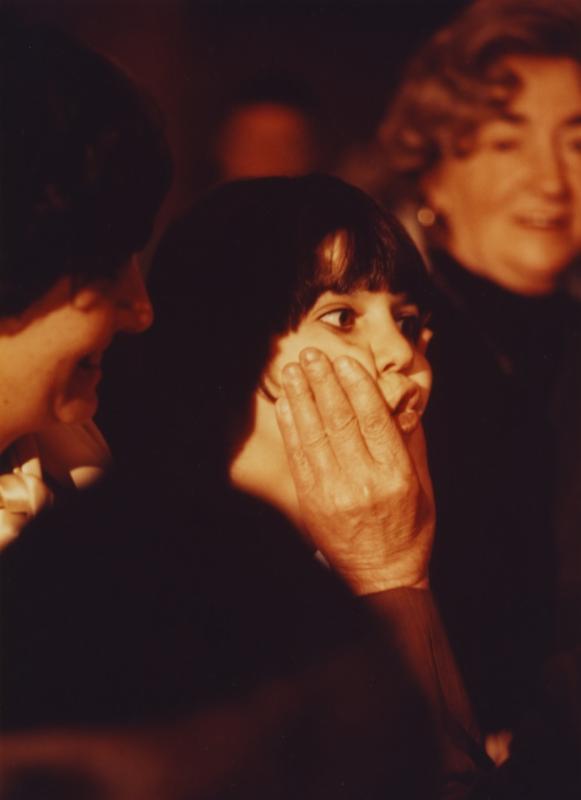 priorities were fitting in at public school, skiing, biking and surfing and playing with my band. I was proud to be Jewish and enjoyed family Friday Night dinners, but my tefillin were relegated to a dark closet never to see the light of day.
priorities were fitting in at public school, skiing, biking and surfing and playing with my band. I was proud to be Jewish and enjoyed family Friday Night dinners, but my tefillin were relegated to a dark closet never to see the light of day.
Fast forward to my twenties when I was building my first recording studio and working as a full-time composer. I was chasing TV and movie score work, producing my first albums for clients and trying to get a record deal with my own band. I was approached to write some music to benefit the Operation Exodus campaign (Hineni) and a song for a Camp Ramah Hallel service (Pitchu Li) and suddenly found myself referred to as a Jewish composer. Accelerating this awakening was meeting John and Ruth Rauch whose Center for Jewish Culture and Creativity was offering a two-week arts seminar in Jerusalem, all expenses paid. I knew I wanted to get back to Jerusalem and was excited to get some inspiration to write some more Jewish tunes, so I applied and got accepted to the program.
Imagine the thrill of living in the elegant guest artist hotel Mishkenot She’ananim in Jerusalem where creative types of all sorts performed, collaborated and workshopped late into the nights. I wrote another three songs that would become part of my first Jewish album and bonded tightly with the international group of composers assembled from the four corners of the earth. On one of the final nights of the program one of our mentors made a point of having a one-on-one conversation with me. Phillip said, “Sam, I’ve noticed you are a deeply religious guy.” I laughed, waiting for the punch line. “No, I’m serious,” he insisted. I responded that I couldn’t imagine why he might have come to this conclusion and he replied that he had overheard me in dialog with the Israelis on our program and noted that I always took the religious side of our theological arguments.
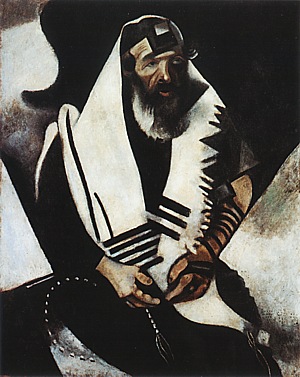 Phillip concluded that I should further investigate this side of my personality and perhaps it would bear some fruit. When I asked how I might do that he suggested that I choose a mitzvah and make it my own. We pondered the alternatives and he then asked if I had ever wrapped tefillin. “Yes,” I replied, “I have a pair that I received for my Bar Mitzvah.” Phillip told me to try putting them on and using this spiritual activity as a way to remember the connection I felt in Israel. Upon returning home weeks went by before I made it over to my parent’s house and found the aged leather in the exact place where it had been left sixteen years earlier. The next morning in my beachside apartment I tried to put them on. I had very little recollection of how to tie the straps or utter the appropriate blessings. I did know enough once I got them on that it was a good time to say the Sh’ma and V’ahavta, to thank God for the blessings in my life and ponder my connection with my heritage.
Phillip concluded that I should further investigate this side of my personality and perhaps it would bear some fruit. When I asked how I might do that he suggested that I choose a mitzvah and make it my own. We pondered the alternatives and he then asked if I had ever wrapped tefillin. “Yes,” I replied, “I have a pair that I received for my Bar Mitzvah.” Phillip told me to try putting them on and using this spiritual activity as a way to remember the connection I felt in Israel. Upon returning home weeks went by before I made it over to my parent’s house and found the aged leather in the exact place where it had been left sixteen years earlier. The next morning in my beachside apartment I tried to put them on. I had very little recollection of how to tie the straps or utter the appropriate blessings. I did know enough once I got them on that it was a good time to say the Sh’ma and V’ahavta, to thank God for the blessings in my life and ponder my connection with my heritage.
Midway through my prayers the phone rang. As I reached for the receiver it dawned on me that this was my time to pray and I shouldn’t interrupt the moment with a call. As I uttered the ancient words, however, I did pause to listen to my answering machine as it picked up the message: it was my friend Jymm Adams from the Sports Channel of LA asking me to do all the music for TV broadcast of the Dodger and Angel home games that season. I reached my strapped up hands to the heavens and said, “We’ll try this again tomorrow!”
I never got another lucrative mid-prayer phone call, but this small daily exercise of faith gave me something much more: a palpable relationship with the Creator of heaven and earth. As long as I was setting aside a few minutes each day to pray I started to navigate the challenging waters of the long winded P’zukei D’zimra (Psalms of Praise) and the central prayer, the Shmoneh Esrai. I added paragraph by paragraph onto my personal ritual, not wanting to bog myself down with too long a service but hoping to increase the fluidity of my Hebrew reading. I was suddenly grateful for the hours of Hebrew School, Camp Ramah and practice with my cantor and Bar Mitzvah tutor. Thanks to those with the thankless task of teaching this class clown, I could actually read the Hebrew and with time could flow through the siddur. Before long I could get through the majority of the Shachrit (morning) service and put on my tefillin like a champ. Eventually I learned to focus on the meanings rather than just pronunciations of the words and learned to close my eyes and simply dwell in God’s presence.
At first the whole binding exercise seemed like a masochistic reenactment of the binding of Isaac, attempting to sublimate ego and will to that of the Almighty in a servant/master relationship. Perhaps tefillin are a physical expression of our being “bound” in a covenant with God. Contracts and covenants are good in that they inspire a sense of trust for each party; I was learning to trust God in my daily life, and I was hoping to become someone that God would consider a trustworthy partner in the healing of the world. As I grew in my spiritual intelligence I realized that tefillin commemorate 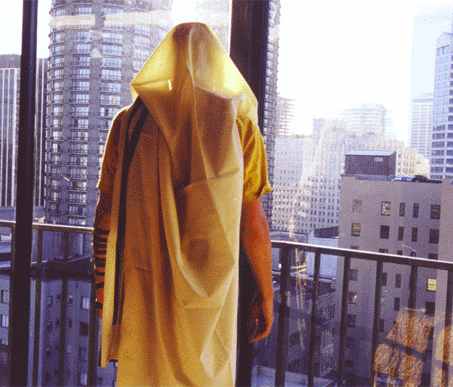 a much greater degree of intimacy that can only be compared to the covenant of marriage: When we wind them around our fingers we utter the betrothal passage of Hoshea that is often recited at marriage ceremonies. For me, tefillin represent a daily “chuppah” moment just like at Mount Sinai, where I get to participate in a loving embrace of my “partner” in creation.
a much greater degree of intimacy that can only be compared to the covenant of marriage: When we wind them around our fingers we utter the betrothal passage of Hoshea that is often recited at marriage ceremonies. For me, tefillin represent a daily “chuppah” moment just like at Mount Sinai, where I get to participate in a loving embrace of my “partner” in creation.
We all know that tefillin are mentioned four times in our Torah, most notably in one of our most important prayers, the Sh’ma. It is these four passages that are carefully transcribed with the same care as a mezuzah or Torah scroll, both in the head and arm boxes. In the Sh’ma our love affair with God is described as one that involves all our heart, soul and might. So too do we wear the tefillin on the arm close to the heart, on the head, the seat of the soul/intellect, and might, the realm of action on our bicep. There is also an idea that the head straps hang unevenly down towards our genitalia. Essentially we are employing a very physical system of checks and balances, a daily uniting of our spiritual and material existence, our yetzer hatov and yetzer harah (good and evil inclinations,) all within the realm of love. Tefillin offer us the chance to walk the middle path, to keep our intellect, emotions and physical being in peaceful coexistence in service to God.
Another virtue of this practice is the idea of unifying the transmission of both the written and oral law. The Chumash (Torah) advises that we place a sign on our arms and between our eyes, but does not tell us exactly where that place is, what that “sign” looks like or even to employ leather and parchment. Yet for millennia Jews have worn the same black boxes in more or less the same way. I remember on that Bar Mitzvah trip how we hiked to top of Masada and learned that the 2000-year-old tefillin that were discovered were indistinguishable from those of today. Clearly Moses was shown diagrams and visions in addition to just taking dictation on Sinai. This oral law gives us the “meat” on the bones of our written transmission of God’s will. By wearing tefillin everyday we deepen the connection of these two worlds of understanding and take our place in the chain of transmission.
I highly recommend Aryeh Kaplan’s book aptly titled “Tefillin” for anyone curious about the role of gender and the deeper mystical aspects of this mitzvah.
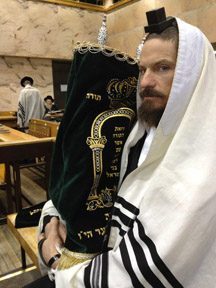 These days I wear my tefillin wherever I wander. I find that I am often in airports or on the rooftops of hotels looking for a quiet corner to strap up and say my morning prayers. I know it appears strange to onlookers but laying tefillin makes a definitive statement: “I’m Jewish, this is what we do, thanks for respecting our differences.” I welcome the questions that often ensue. When I’m not in the synagogue, I have a favorite spot on my east-facing porch where I am greeted with the warm morning light, flitting hummingbirds and the perfume of jasmine. With my own kids I am relaxed with pushing them to get to a minyan on Shabbat, but I consider the wearing of tefillin every weekday inviolate. Their willingness to do this mitzvah is a prerequisite to participating in our family vacations or any activities on Sundays. Thankfully they get it, largely because they see me doing it and they intuit the importance of consistency. Hopefully it’s more than guilt that motivates them…they have their own loving relationship with God…why mess that up? As Woody Allen says, “80% of life is showing up.” I believe that faithful behavior like a daily appointment with one’s tefillin elevates elusive faith into the realm of knowledge.
These days I wear my tefillin wherever I wander. I find that I am often in airports or on the rooftops of hotels looking for a quiet corner to strap up and say my morning prayers. I know it appears strange to onlookers but laying tefillin makes a definitive statement: “I’m Jewish, this is what we do, thanks for respecting our differences.” I welcome the questions that often ensue. When I’m not in the synagogue, I have a favorite spot on my east-facing porch where I am greeted with the warm morning light, flitting hummingbirds and the perfume of jasmine. With my own kids I am relaxed with pushing them to get to a minyan on Shabbat, but I consider the wearing of tefillin every weekday inviolate. Their willingness to do this mitzvah is a prerequisite to participating in our family vacations or any activities on Sundays. Thankfully they get it, largely because they see me doing it and they intuit the importance of consistency. Hopefully it’s more than guilt that motivates them…they have their own loving relationship with God…why mess that up? As Woody Allen says, “80% of life is showing up.” I believe that faithful behavior like a daily appointment with one’s tefillin elevates elusive faith into the realm of knowledge.
I’d like to finish with a tefillin story. Everyone that I know that wraps on a daily basis has a good tefillin story, usually about their quest never to miss a day under any circumstances. One day on a concert tour/family vacation on the North Shore of Kauai I did my morning service on the beach overlooking a perfect double overhead swell at Hanalei Bay. After davening I stashed my tefillin in the car and paddled out to have one of the most exciting surf sessions of my life. The locals were helping me get into position to drop into some of the smoothest and deepest bowls of bright green glass of my aquatic career. After a few hours of breathless exertion I returned to my rental car surprised that the interior smelled of cigarette smoke. I then realized that someone else had been in the car. I checked under the seat to find that my phone, camera and tallis/tefillin bag were gone.
I searched the area, interviewed onlookers and filed a report with the police, to no avail. My son Max was Bar Mitzvah age but had left his tefillin in LA and I didn’t know of anyone else in the North Shore that might be observant. What would I pray with on the following day, the last weekday of our trip? I had another problem…how would I reach the guy with whom I was supposed to be jamming that night? After my concert the night before, some locals were inspired to get me together with a percussionist to do a show in a club. But now without my precious iPhone, I didn’t have any of their contact information. It dawned on me that some friends of ours from LA were vacationing on the South Shore. Perhaps we could reach them and arrange to get together and borrow their tefillin.
Sure enough the Brant-Sarif family agreed to meet us for a hike on the North Shore. We met on the edge of a certain condo complex where a steep trail heads down a cliff to a system of ocean-side sea  caves inhabited by giant sea turtles. Following our explorations we scaled the cliff back to the parking lot and went back to their car so that my son and I could daven with tefillin. Time was of the essence since they had to get back down south before Shabbat came in. Just as I strapped up, a warm Hawaiian drizzle started to fall. To avoid getting my friend’s tefillin wet we all dashed into the alcove of one of the condos and shared an animated communal mincha (afternoon) prayer session.
caves inhabited by giant sea turtles. Following our explorations we scaled the cliff back to the parking lot and went back to their car so that my son and I could daven with tefillin. Time was of the essence since they had to get back down south before Shabbat came in. Just as I strapped up, a warm Hawaiian drizzle started to fall. To avoid getting my friend’s tefillin wet we all dashed into the alcove of one of the condos and shared an animated communal mincha (afternoon) prayer session.
Just as we were davening the owner of this particular condo came walking down the stairs and shouted, “What the…” Upon closer inspection he stated, “my mishpocha!” Sure enough he was a Jewish guy from the mainland that had recently made Hawaii his home. He demurred when we offered him to try on the tefillin but he invited us into his condo for a drink. When I introduced myself as a visiting musician he responded, “You’re Sam Glaser?? We were supposed to jam last night!” Yes, this condo where we were huddled, trying to sneak in our mitzvah of tefillin before Shabbat began, was the very home of the person that I needed to reach the day before.
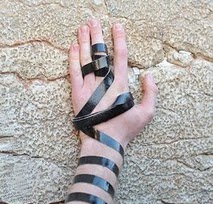 Wearing my tefillin on a daily basis has been nothing other than a window to perceive the daily miracles in my life. Thanks to this discipline I have a regular rendezvous with the Almighty that is fulfilling and unshakeable. Ensuring that I never miss this appointment has created some truly memorable moments. I’m also reminded of the power of an encouraging word: just like my mentor on that Israel program gave me the idea of tefillin as a way to connect my trip to further spiritual growth, so too do I try to offer similar suggestions to those with open hearts whom I encounter. Finally, tefillin offer access to the deepest realms of the soul: a connection of mind, body and heart, a binding of servant to master and a daily reenactment of our sacred marriage with the Creator of the Universe.
Wearing my tefillin on a daily basis has been nothing other than a window to perceive the daily miracles in my life. Thanks to this discipline I have a regular rendezvous with the Almighty that is fulfilling and unshakeable. Ensuring that I never miss this appointment has created some truly memorable moments. I’m also reminded of the power of an encouraging word: just like my mentor on that Israel program gave me the idea of tefillin as a way to connect my trip to further spiritual growth, so too do I try to offer similar suggestions to those with open hearts whom I encounter. Finally, tefillin offer access to the deepest realms of the soul: a connection of mind, body and heart, a binding of servant to master and a daily reenactment of our sacred marriage with the Creator of the Universe.
 One of the perks of my line of work is time on the road to enjoy new experiences with people and places when I’m not on stage. This year marks my third time leading the High Holiday worship for a wonderful beachside congregation in Virginia Beach. Each year I bring my family and we have used the time between Rosh Hashana and Yom Kippur to explore Washington DC, the Outer Banks and a very special mid-state retreat, Lake Anna. This unique body of water was formed in the early 70’s to cool the North Anna Nuclear Power Plant. Nearly 13,000 acres were flooded, creating hundreds of miles of prime lakefront property in the middle of an old growth forest.
One of the perks of my line of work is time on the road to enjoy new experiences with people and places when I’m not on stage. This year marks my third time leading the High Holiday worship for a wonderful beachside congregation in Virginia Beach. Each year I bring my family and we have used the time between Rosh Hashana and Yom Kippur to explore Washington DC, the Outer Banks and a very special mid-state retreat, Lake Anna. This unique body of water was formed in the early 70’s to cool the North Anna Nuclear Power Plant. Nearly 13,000 acres were flooded, creating hundreds of miles of prime lakefront property in the middle of an old growth forest. spent our evenings relaxing with movies, card games and Settlers of Catan. I was also repeatedly rehearsing the Yom Kippur services, much to my family’s chagrin. Each night when everyone went to sleep I ventured down the uneven steps to the waters edge to ponder the stars and pray the evening prayers. On this particular night a sliver of the new Tishrei moon appeared and disappeared amidst the clouds above and the motionless ink-black water at my feet stretched to the horizon. I was surrounded with the rich stereo cacophony of multitudinous crickets filling the air and the occasional splash of a leaping lake trout. I closed my eyes and quietly recited the passages before and after the Sh’ma, then walked to the edge of the dock to recite the central Jewish prayer, the Sh’moneh Esrai. As I whispered the sacred words I searched the outlines of the gently swaying trees and felt them beckoning me upward. Suddenly a warm gust of wind welled up behind me and heard the baritone clang of the tubular bells of the large dockside wind chime. A chill rose from my feet to the top of my head and I felt like I was about to lift off the dock. I was ready to fly, to accept the gift of Heavenly wings.
spent our evenings relaxing with movies, card games and Settlers of Catan. I was also repeatedly rehearsing the Yom Kippur services, much to my family’s chagrin. Each night when everyone went to sleep I ventured down the uneven steps to the waters edge to ponder the stars and pray the evening prayers. On this particular night a sliver of the new Tishrei moon appeared and disappeared amidst the clouds above and the motionless ink-black water at my feet stretched to the horizon. I was surrounded with the rich stereo cacophony of multitudinous crickets filling the air and the occasional splash of a leaping lake trout. I closed my eyes and quietly recited the passages before and after the Sh’ma, then walked to the edge of the dock to recite the central Jewish prayer, the Sh’moneh Esrai. As I whispered the sacred words I searched the outlines of the gently swaying trees and felt them beckoning me upward. Suddenly a warm gust of wind welled up behind me and heard the baritone clang of the tubular bells of the large dockside wind chime. A chill rose from my feet to the top of my head and I felt like I was about to lift off the dock. I was ready to fly, to accept the gift of Heavenly wings. I must say that for the first time, prayer makes perfect sense to me. I’ve been davening daily for over twenty years…I guess it’s about time! The gift of Jewish prayer is a product of the powerful connection initiated by our forefather Avraham, God’s first partner in Tikkun Olam. It is a vehicle for radical transformation with an impact on a global scale. All this time I thought it was just an ancient rabbinic wish list that we endlessly repeat, badgering God into action. Now I understand that prayer is the very instigator of Heavenly action in our material realm. I know viscerally that the transformative power of the human soul is unlimited by space and time. That even though I am surrounded by darkness in the forest of Mineral, VA, I can participate fully in the formation of a peaceful, loving planet, impacting my family, America, Israel, the entire world. Just as God is everywhere, I am everywhere. My pure soul, my “betzelem Elokim” spark of Godliness makes me immortal and omnipresent. At least for those few minutes a day when I choose to connect.
I must say that for the first time, prayer makes perfect sense to me. I’ve been davening daily for over twenty years…I guess it’s about time! The gift of Jewish prayer is a product of the powerful connection initiated by our forefather Avraham, God’s first partner in Tikkun Olam. It is a vehicle for radical transformation with an impact on a global scale. All this time I thought it was just an ancient rabbinic wish list that we endlessly repeat, badgering God into action. Now I understand that prayer is the very instigator of Heavenly action in our material realm. I know viscerally that the transformative power of the human soul is unlimited by space and time. That even though I am surrounded by darkness in the forest of Mineral, VA, I can participate fully in the formation of a peaceful, loving planet, impacting my family, America, Israel, the entire world. Just as God is everywhere, I am everywhere. My pure soul, my “betzelem Elokim” spark of Godliness makes me immortal and omnipresent. At least for those few minutes a day when I choose to connect. throughout the year is the underlying reason for our intimidating list of 613 commandments. God urges us to become holy vessels so that we can powerfully assist God in the mission to perfect the world. Living within the boundaries that our beloved Torah prescribes keeps us in the spiritual zone and indicates our commitment to do this crucial work. This experience clarified for me why the Jewish People endures this legacy of celestial responsibility and intense demands on our lifestyle. A good example is kashrut, or why we have to give up certain delicacies like clam chowder and Dodger Dogs. We can see these seemingly archaic rules as a nuisance or instead appreciate that they are necessary since we are spiritual giants that on a sacred mission of Tikkun Olam (healing the world.) After all, it makes sense that the holy words of the siddur are uttered by a mouth that eats kosher food. Our food nourishes each cell in our bodies; certainly we are what we eat and our Creator knows the ideal spiritual formula. Suddenly the effort to prepare and shlep ten days worth of meals to bring in our suitcases for this trip makes a bit more sense.
throughout the year is the underlying reason for our intimidating list of 613 commandments. God urges us to become holy vessels so that we can powerfully assist God in the mission to perfect the world. Living within the boundaries that our beloved Torah prescribes keeps us in the spiritual zone and indicates our commitment to do this crucial work. This experience clarified for me why the Jewish People endures this legacy of celestial responsibility and intense demands on our lifestyle. A good example is kashrut, or why we have to give up certain delicacies like clam chowder and Dodger Dogs. We can see these seemingly archaic rules as a nuisance or instead appreciate that they are necessary since we are spiritual giants that on a sacred mission of Tikkun Olam (healing the world.) After all, it makes sense that the holy words of the siddur are uttered by a mouth that eats kosher food. Our food nourishes each cell in our bodies; certainly we are what we eat and our Creator knows the ideal spiritual formula. Suddenly the effort to prepare and shlep ten days worth of meals to bring in our suitcases for this trip makes a bit more sense. The bright red bow on top of the “present” of the month of Tishrei is in the message of Sukkot. Sukkot is all about joy. It’s about a sense of triumph after the work of the ten days of repentance, about the recognition that all we really have is this ephemeral relationship with the Almighty, as signified by our fragile sukkah. That breakthrough that I experienced on the dock at midnight is only possible in a milieu of joy. Our prophets could only prophesy in a joyful mood. We know Avraham was ecstatic about his divine service in the near sacrifice of Yitzchak or he wouldn’t have perceived the angel exhorting him to stay his hand. Joy it the key to the Palace. It is the pipeline connecting us to the heavens. We learn that one moment of the Olam Habah (the world that is coming) exceeds all the joy of this world combined. God exists in a realm of sublime pleasure.
The bright red bow on top of the “present” of the month of Tishrei is in the message of Sukkot. Sukkot is all about joy. It’s about a sense of triumph after the work of the ten days of repentance, about the recognition that all we really have is this ephemeral relationship with the Almighty, as signified by our fragile sukkah. That breakthrough that I experienced on the dock at midnight is only possible in a milieu of joy. Our prophets could only prophesy in a joyful mood. We know Avraham was ecstatic about his divine service in the near sacrifice of Yitzchak or he wouldn’t have perceived the angel exhorting him to stay his hand. Joy it the key to the Palace. It is the pipeline connecting us to the heavens. We learn that one moment of the Olam Habah (the world that is coming) exceeds all the joy of this world combined. God exists in a realm of sublime pleasure.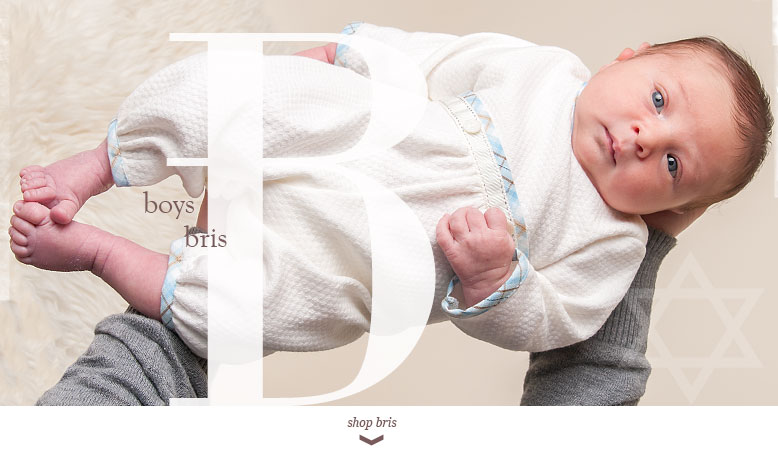 What did the moel bring to the bris?
What did the moel bring to the bris?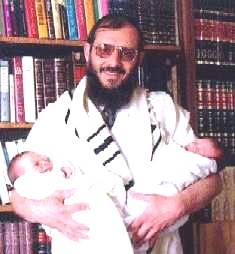 Two days later came the fancy bris of the month. All of the neighborhood big shots were assembled and it was anyone’s guess which bearded sage would be graced with the highest honor of sandek, the person who holds the baby in his lap during the ceremony. It was the father’s fourth child but he was as touched as if it were his first. His beautiful wife sobbed as she looked on. Amidst the pomp and circumstance of this first class affair there was still a simple presence of the Shechina and sure enough I found myself getting misty eyed once again. I was still wearing my tallis and tefillin from Shachrit and even though I had prayed in rote fashion, the power of the words I had already uttered somehow landed in my atria at the moment of the incision. One lesson learned: most attendees come for the mitzvah and not the meal. The ample delicacies were artfully displayed in stations across the vaulted lobby of the Museum of Tolerance and yet about 10% was eaten by the time the room cleared out.
Two days later came the fancy bris of the month. All of the neighborhood big shots were assembled and it was anyone’s guess which bearded sage would be graced with the highest honor of sandek, the person who holds the baby in his lap during the ceremony. It was the father’s fourth child but he was as touched as if it were his first. His beautiful wife sobbed as she looked on. Amidst the pomp and circumstance of this first class affair there was still a simple presence of the Shechina and sure enough I found myself getting misty eyed once again. I was still wearing my tallis and tefillin from Shachrit and even though I had prayed in rote fashion, the power of the words I had already uttered somehow landed in my atria at the moment of the incision. One lesson learned: most attendees come for the mitzvah and not the meal. The ample delicacies were artfully displayed in stations across the vaulted lobby of the Museum of Tolerance and yet about 10% was eaten by the time the room cleared out. There is special significance in the fact that we are commanded to carry out this holy procedure on the eighth day. Kabbalah teaches that seven is the number associated with the intersection of the human sphere and the divine. That is why our weekly communion with our Creator and Redeemer, the Sabbath, is every seventh day. Eight is one step beyond, entirely metaphysical, the realm of the supernatural. It is interesting that eight is simply the vertical representation of the universal symbol for infinity. Eight is also the number associated with Chanukah where we celebrate the miraculous victory of the Maccabees and the length of time that the single cruse of oil burned. Some say that the miracle of Chanukah is the fact that we bothered to try to light the menorah or fight the Syrian-Greeks in the first place. After all, isn’t it wiser to surrender when all the chips are down, when defeat is inevitable? NO, says Jewish tradition. That is precisely when we must remember that we are a supernatural people that defies all laws of conventional sociology and, with God’s help, we are invincible.
There is special significance in the fact that we are commanded to carry out this holy procedure on the eighth day. Kabbalah teaches that seven is the number associated with the intersection of the human sphere and the divine. That is why our weekly communion with our Creator and Redeemer, the Sabbath, is every seventh day. Eight is one step beyond, entirely metaphysical, the realm of the supernatural. It is interesting that eight is simply the vertical representation of the universal symbol for infinity. Eight is also the number associated with Chanukah where we celebrate the miraculous victory of the Maccabees and the length of time that the single cruse of oil burned. Some say that the miracle of Chanukah is the fact that we bothered to try to light the menorah or fight the Syrian-Greeks in the first place. After all, isn’t it wiser to surrender when all the chips are down, when defeat is inevitable? NO, says Jewish tradition. That is precisely when we must remember that we are a supernatural people that defies all laws of conventional sociology and, with God’s help, we are invincible.